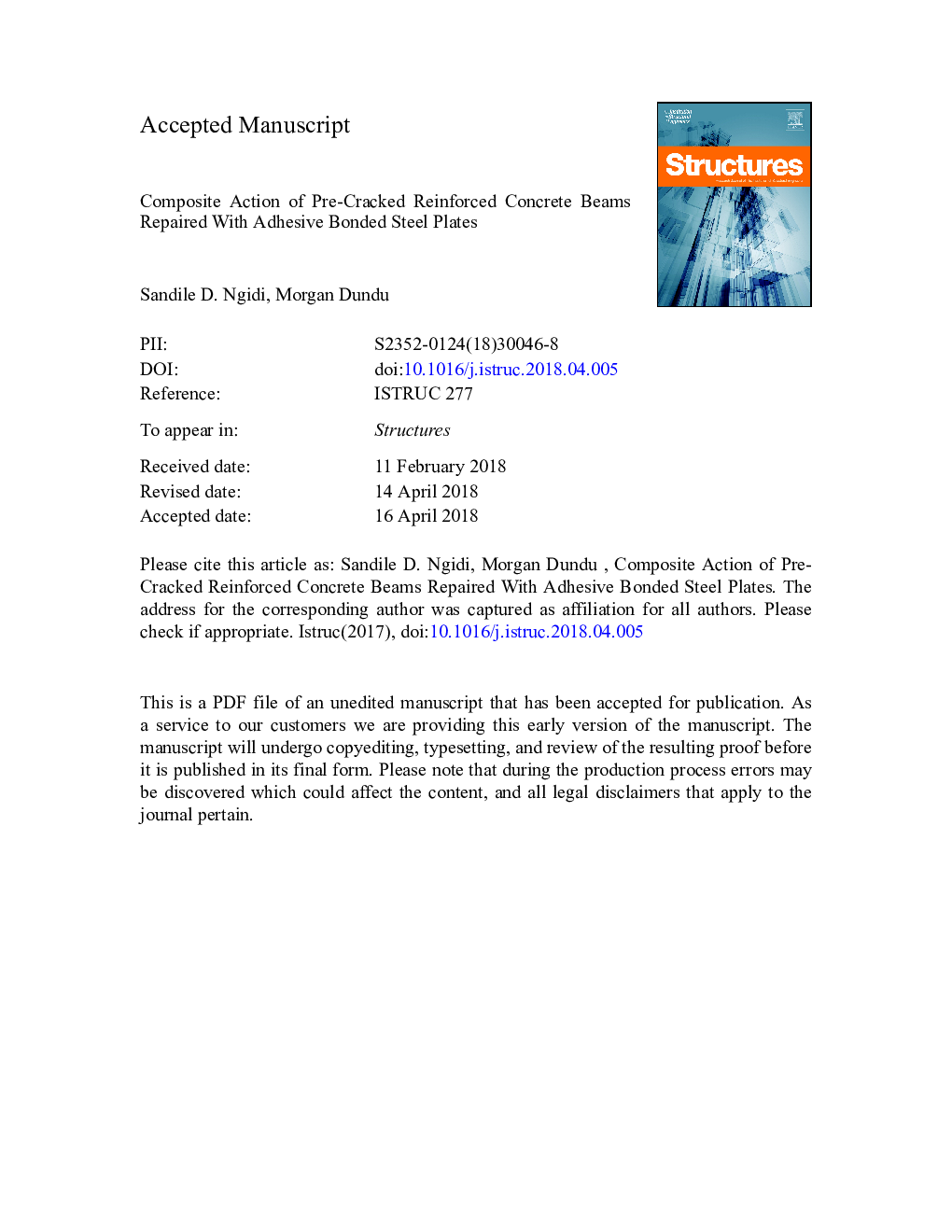| Article ID | Journal | Published Year | Pages | File Type |
|---|---|---|---|---|
| 6774607 | Structures | 2018 | 20 Pages |
Abstract
Previous studies demonstrated that significantly cracked beams can be repaired by bonding steel plates, however, there is a lack of comprehensive information about the effect of the width-to-thickness ratio of steel plates on repaired composite beams, and the use of thicker plates to repair failed RC beams. This paper presents an assessment of the performance of pre-cracked reinforced concrete beams repaired with adhesive bonded steel plates, of varying width-to-thickness ratio, at the soffit. A total number of 12 beams were tested under a two-point static loading. Group 1 consisted of two control specimens, Group 2 comprised of five beams that were pre-cracked to 60% (serviceability load), and Group 3 consisted of another five beams that were pre-cracked to 85% of the ultimate load. Subsequently, the pre-cracked beams were repaired by bonding steel plates of 6â¯mm thickness and 75-175â¯mm widths, which varied in increments of 25â¯mm. Externally bonding steel plates to pre-cracked reinforced concrete beams increased their load capacities by >100%, compared to the control beams. Except for specimen PB60-175, there is generally increase in the capacity of the repaired beams with increase in the width-to-thickness ratio of the steel plates. Beams that were pre-cracked at a lower load level (serviceability load) reached higher strengths than the beams that were pre-cracked at a higher load level (85% of the ultimate load capacity). In all tested beams, the experimental moment of resistance did not reach the code-predicted moment of resistance, calculated using EN 1992-1-1.
Related Topics
Physical Sciences and Engineering
Engineering
Civil and Structural Engineering
Authors
Sandile D. Ngidi, Morgan Dundu,
